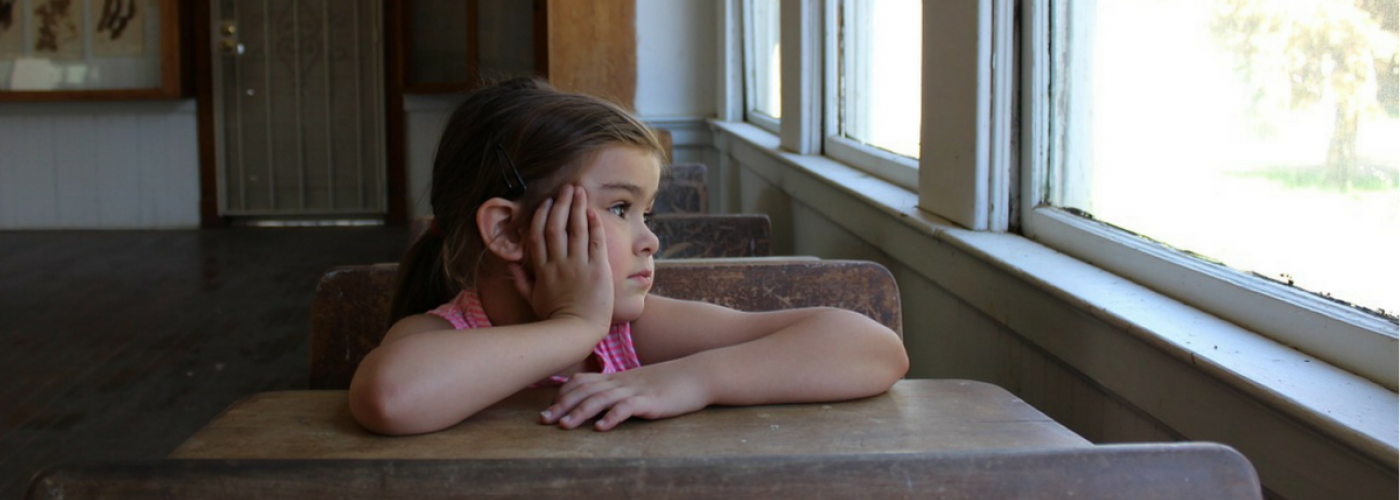16th May 2017
It’s Friday afternoon. You are presenting a grammar explanation of the past perfect to your class but when you look up, your teens are staring at the screen of their smartphones, chatting to their neighbor, or even resting their heads down on the table with a sense of pre-weekend lethargy. Sound familiar? We have all experienced passive learners, and often that can feel worse than dealing with overactive learners, as it feels like no matter what you do, you cannot inspire your class.
So what’s the solution? The obvious one would be to arouse interest and curiosity for learning, but while it’s quite easy to say, putting it into practice is a more complex matter. There is no easy quick fix when it comes to motivating young learners and teens, some may say that you should work with learner interests, basing classes on popular culture, while others may claim that a main factor that causes demotivation in students is when the content is too difficult prompting feels of frustration, but quite often learners start to zone out for the exact opposite reason, because the content is just not challenging enough.
What do we mean when we talk about cognitive engagement?
If you’re currently a teacher, you might have heard this term banded about, as it suddenly seems to be a buzzword in educational circles, but what does it actually mean? According to a group of researchers from the University of Calgary, cognitive engagement is ’’the investment that students place in their learning and their ability to strategically think and place relevance on their work to everyday life’’. In other words, cognitive engagement refers to those moments when learners are completely absorbed in a task, their brains are processing information instensely and they are aware of their own learning. In the case of young learners, particularly primary learners, childhood is a time where they are constantly exploring the world around them and working out how things work. Think about the first time you saw a child playing with something, such as a musical instrument. They will examine it from all angles, touch it, hold it and try to work out what it can do. This is a good example of cognitive engagement, but how can we recreate similar stimulating conditions in the classroom?
One of the key things that teachers can do is encourage learners to experiment with the world around them. Some of the best lessons I have observed offered learners the chance to form hypothesis and experiment with their surroundings. I once saw a teacher do an egg-drop experiment, where learners had to predict which material would work best to catch a falling egg and prevent it from smashing. The learners were excited to find out what was going to happen and attention was high for the entire lesson. They were also keen to speak English in order to make predictions about what was going to happen because the lesson, the materials, outcomes and objectives were real and tangible.
Critical thinking also increases cognitive engagement. Bloom’s taxonomy ranks cognitive skills from easy to more difficult, placing ‘remember’ at the bottom, and placing analyze, evaluate and create at the top. That means that for learners it may be relatively easy to remember that the word ‘environment’ corresponds to the word in their L1, but it is a much more complex task to create a campaign to protect the environment, as that involves generating and refining ideas in order to create something. As teachers we may start a lesson with easier tasks, as this offers an element of scaffolding for our learners, but as the lesson progresses, we should be encouraging them to carry out higher-order critical thinking tasks, such as reflecting on their own learning and progress.
Tips for creating cognitive learning in the classroom
The main concern for teachers is how they can encourage learners to a state of cognitive engagement in an easy and effective way. Here are a few tips that can help teachers on their way:
1) Encourage exploratory play
Young learners love experiences which are rich to the senses. Provide them with interesting objects that are interesting to see and touch and let them play with them. If you teach kindergarten or primary learners, Play Doh, glitter and clay work really well. If you work with slightly older primaries or teens, encourage exploration through making hypotheses, solving real world problems and doing experiments, for example, which car can go faster or which material is the best to build a tower.
2) Be mindful of the types of questions you ask learners
Teachers are known for asking lots of questions. Sadly, the majority of these tend to be display questions, where we already know the answer (i.e. ‘’What’s that?’’, ‘’That’s right, it’s a dog!’’). These questions often do not require any higher order critical thinking skills. More effective questions to ask may be ‘’How do you think the main character feels in chapter 4?’’, ‘’What would you do in his / her position?’’. These types of questions encourage deeper reflection and personal responses from learners and stimulate real, authentic conversation.
3) Plan a lesson using Bloom’s taxonomy
Use the taxonomy to choose your lesson stages. Explaining new concepts may come earlier in the ‘’Understand’’ phase, but analysis of language (for example when learners need to inductively work out rules) would come later and at the end of the lesson try to include something creative. You don’t necessarily need to include all of the stages but if your lessons tend to only include tasks from the bottom end of the taxonomy, it may be too easy for the learners and may lead to a snooze-fest.
4) Don’t be afraid to go cross-curricular
To make your lesson more cognitively demanding, incorporate content and material from other subjects. Learners, especially teens, love it when they can demonstrate their know-how from other areas such as maths, science or technology.
5) Use puzzles to encourage deduction
This could be as simple as giving learners a riddle, or it could involve inductive tasks where they have to notice rules about language and grammar. Rather than just telling learners how things work, see if they can find it themselves. They are likely to have fun and feel proud of their accomplishments when they get the answer.
6) Remember that puzzles do not necessarily have to have a linguistic objective to be present in your lesson plan
Sometimes a puzzle can be a great warmer in order to get students ready in the mindset to think. A task such as the brain training activities from Luminosity takes just a couple of minutes and is a dynamic way to start the lesson. I am not suggesting that you spend all your lesson on non-linguistic tasks, but a short one to start may mean that learners are more receptive towards learning later on.
7) Encourage your learners to describe what they have done
Metacognition is a buzzword for the right reasons. It is about the learners building an awareness of the mental processes and cognitive tools they use to solve problems, complete listening tasks, complete negotiations, retain new vocabulary...students who develop metacognitive awareness are more likely to be able to identify the problems they are having, process information more deeply and work more independently on their own learning. With primary students, this might be as simple as asking students to identify one thing they did well and one thing they would like to do differently. With older learners, it might be a case of asking students to write anonymous reflections on a slip of paper and collecting these at the end of an activity, keeping journals, or encouraging post-task reflection discussions (it's a good idea to build these into your classroom routines by using the same, or similar questions each time!).
Whichever tips you choose to implement, the important thing is for learners to reflect, reflect, reflect. Ask your learners if they enjoyed the tasks, and ask them to explain why. Find out from learners what their favourite ways of learning are and when they themselves feel like they are learning the most and experiment with new ideas. Take a look at the resources below for some extra ideas for things that you can implement into your own classes.
Did you enjoy this article? Our blogs are published by the teacher training team at English for Asia in Hong Kong. We are the largest Trinity TESOL training centre outside of Europe and are committed to raising standards across the entire TESOL industry. You can help too by sharing articles with your own networks and teaching faculty.
Extra resources for more info:
https://www.pinterest.com/explore/critical-thinking-activities/
https://www.kaplanco.com/ii/selecting-puzzles



